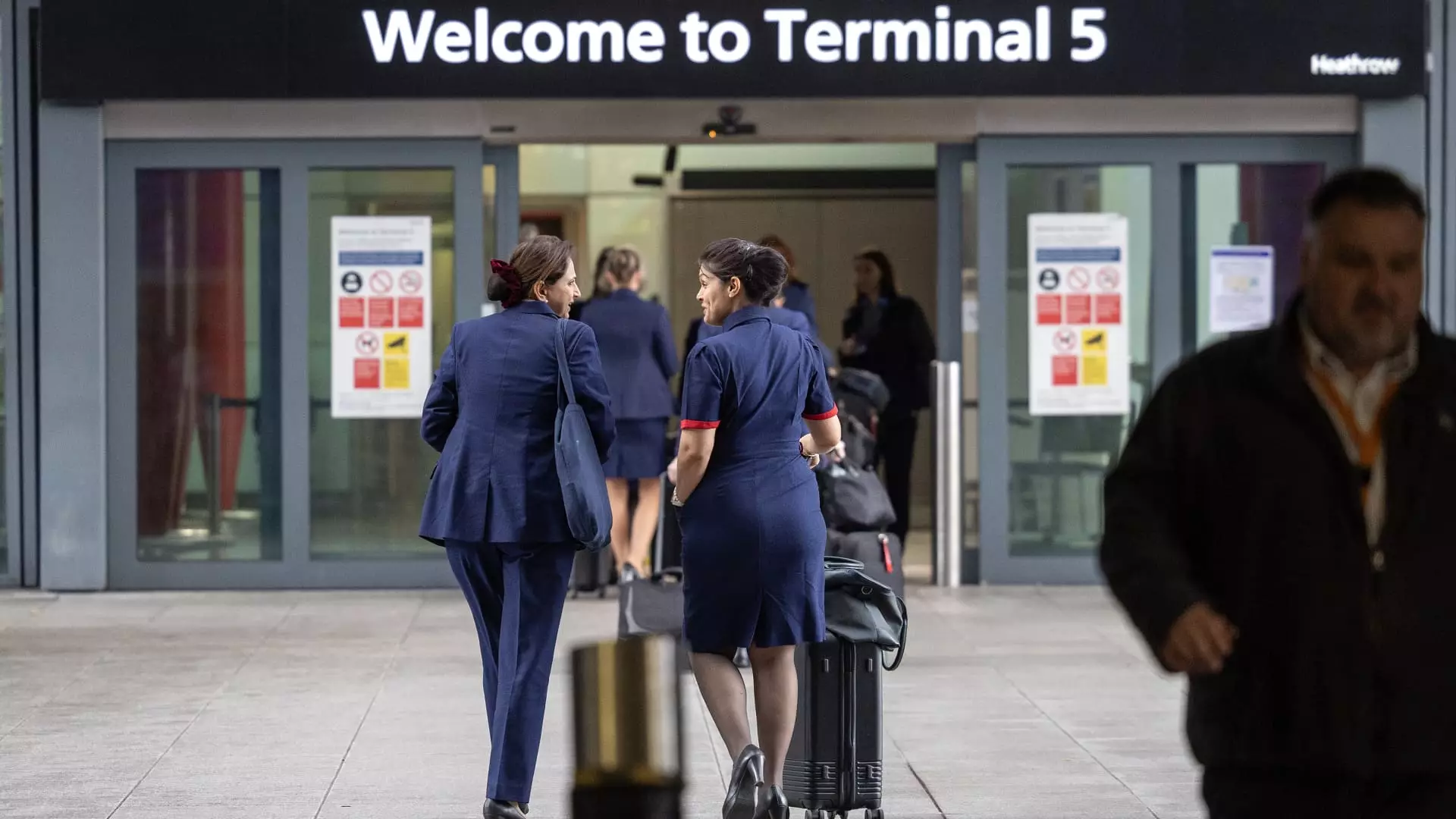Last weekend, the iconic Heathrow Airport faced an unprecedented disruption. For many, traveling through this bustling hub is synonymous with efficiency and reliability; however, the chaos unleashed when a fire at a nearby electrical substation caused an extended power outage shattered that illusion. The ripple effects were immediate and extensive: over 800 flights were canceled Friday, leaving countless passengers stranded and frustrated. The sheer scale of this disruption highlights a troubling reliance on singular power sources in critical infrastructure, a vulnerability that’s not only unacceptable but also alarming in today’s interconnected world.
As travelers flooded social media channels to vent their frustrations, the reality of modern air travel was brutally laid bare. The supposedly seamless operations we often take for granted crumbled in mere hours. Many passengers found themselves knee-deep in confusion and anxiety. When airlines and airports operate on the premise that everything will run smoothly, even minor unforeseen circumstances can lead to monumental inconveniences—raising the question: how prepared are we for the unexpected in our so-called modern age?
Heathrow’s Hasty Recovery: Resumption or Repetition?
Heathrow Airport wasted no time in announcing that operations would resume. While airports around the world have navigated their fair share of crises, the promise of “returning to normal” often belies the complexities behind the scenes. In the case of Heathrow, this was overshadowed by the stark reality: the hasty return to operations was stitched together with limited public transparency and information.
Airlines like British Airways and Virgin Atlantic scrambled to salvage their weekend schedules, but this was no simple task. The return of operations under duress raised further concerns about how many travelers would actually make it to their intended destinations on time. British Airways, for instance, announced that approximately 85% of their flights would operate as planned, but how many of those flights would actually depart as scheduled? The complexities of air travel do not simply disappear overnight, leaving many to wonder if the airport’s assurances were merely an attempt to quell rising discontent.
Accountability and Infrastructure Failures
Questions mounted regarding the level of accountability that airports and airlines carry when such widespread disruptions occur. Willie Walsh, former CEO of British Airways and now CEO of the International Air Transport Association (IATA), raised valid concerns about the apparent lapse in infrastructural planning at Heathrow. The reliance on a single power source was not only shortsighted but posed a risk to passengers who expect a level of safety and reliability from Europe’s busiest airport.
This incident should compel stakeholders to rethink their stance on passenger care costs during infrastructural failures. When does the burden of unanticipated costs devolve solely onto airlines? Shouldn’t there be a broader, systemic approach to ensure that operational failures like this one do not disproportionately impact any single entity? After all, the entire travel ecosystem is interconnected, and when it falters, everyone feels the consequences.
Looking Ahead: The Dangers of Complacency
The impact of this event is both immediate and far-reaching. It serves as a critical reminder that complacency in the aviation industry can have dire ramifications. As we gaze into the future, it becomes essential for professionals across the sector to prioritize contingency planning and to diversify energy sources for facilities that serve millions annually.
The increasing frequency of unexpected disasters highlights a fundamental need for enhanced resilience across critical infrastructures. Stakeholders must engage in transparent discussions, perhaps spearheaded by authorities or leading experts, to ensure that lessons from this incident are not simply filed away but acted upon. In perilous times, the importance of safety and reliability cannot be overstated, and by addressing these vulnerabilities now, we can better safeguard both travelers and the wider community from future disruptions.
The consequences of insufficient planning and a lack of strategic foresight remain a stark reality, and the time for change is now. As we explore the repercussions of Heathrow’s recent turmoil, our collective understanding of infrastructure’s significance in modern society must evolve to meet the challenges ahead.



Leave a Reply